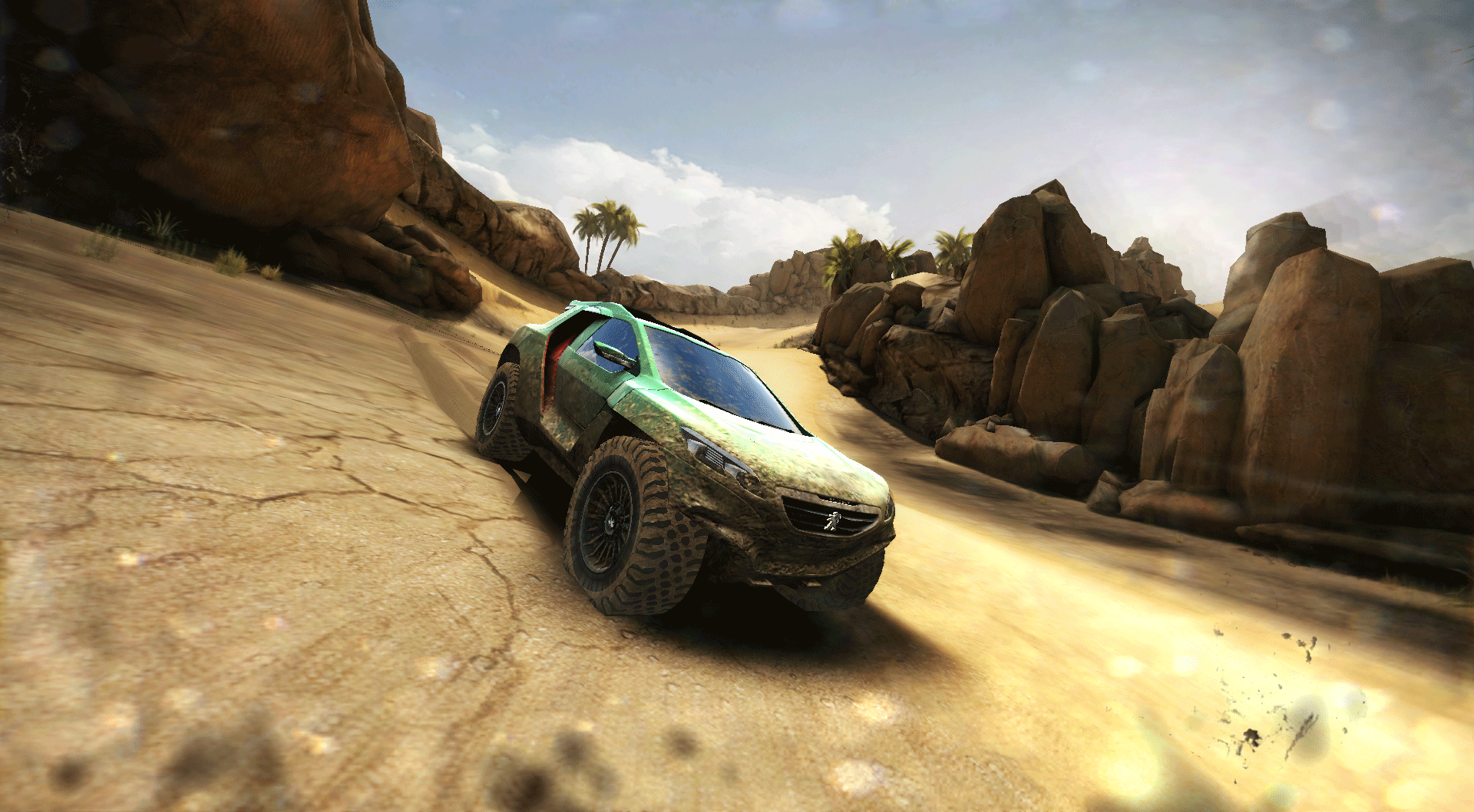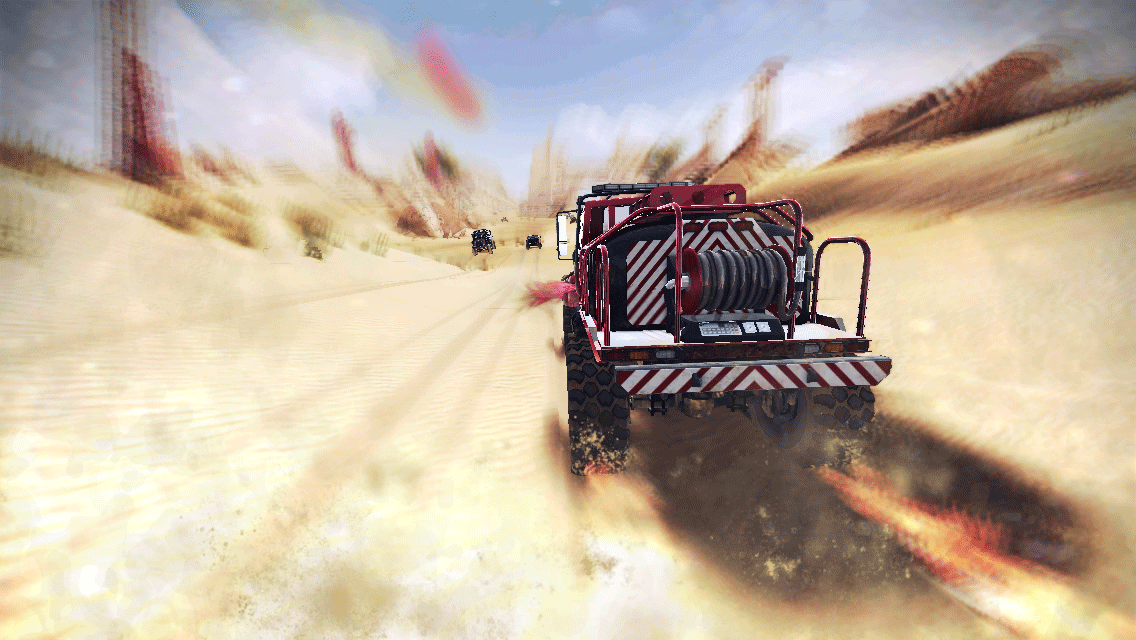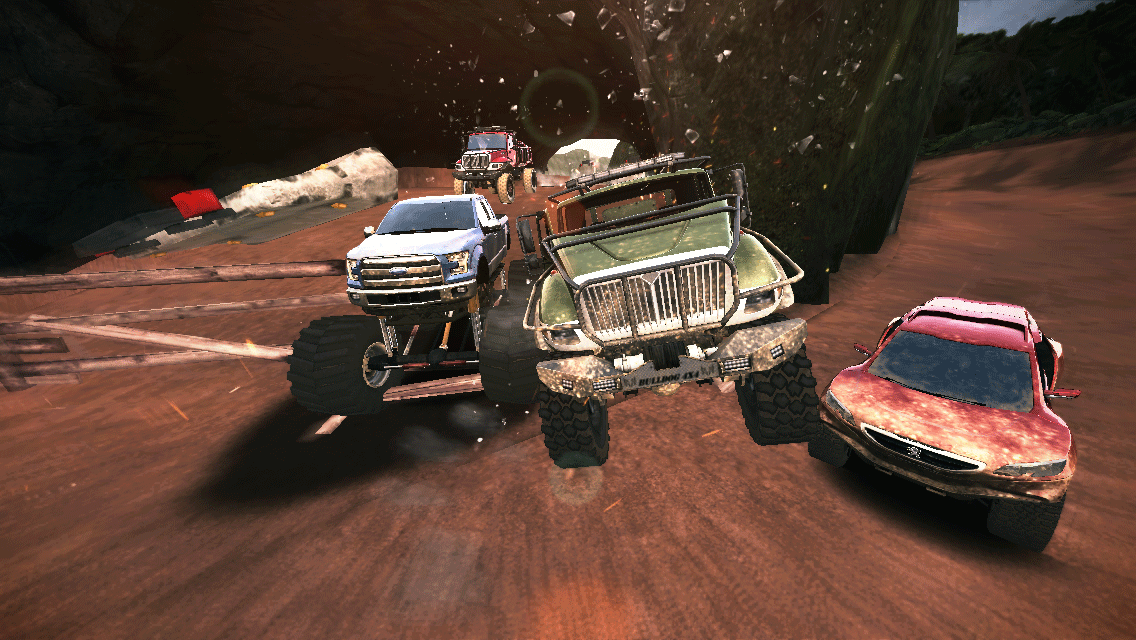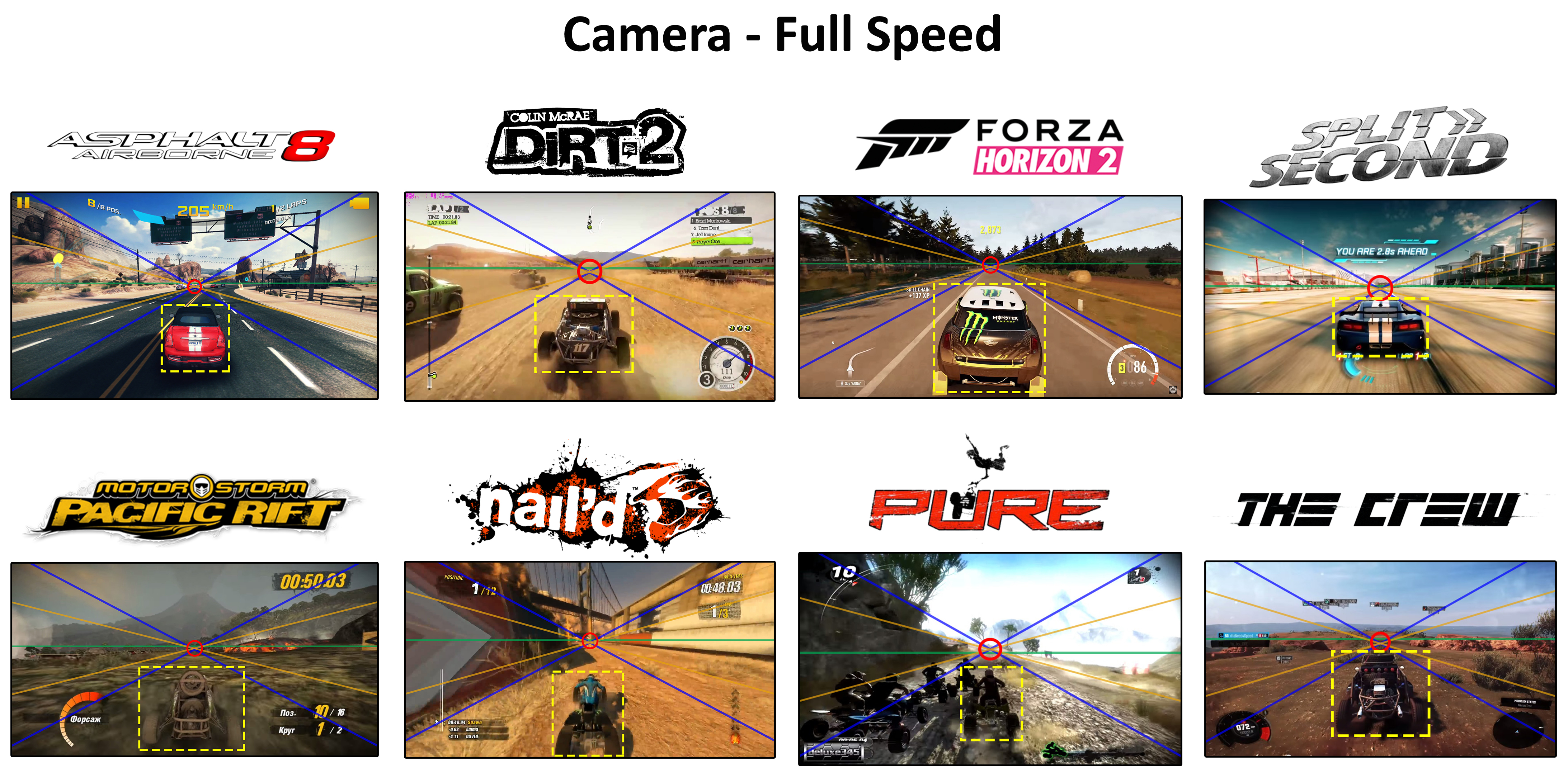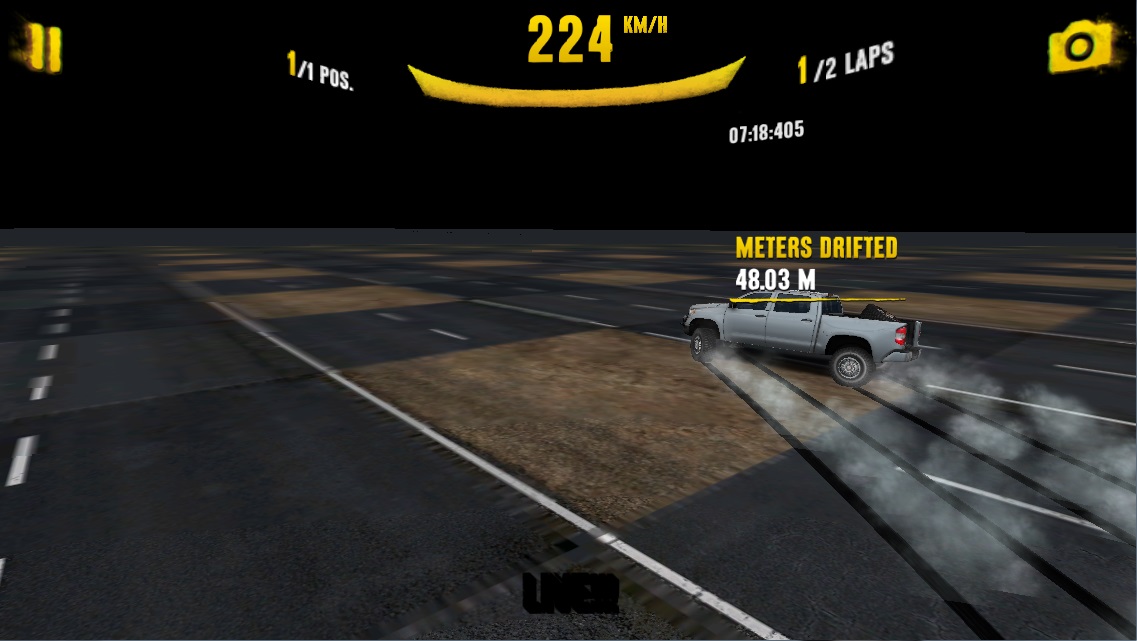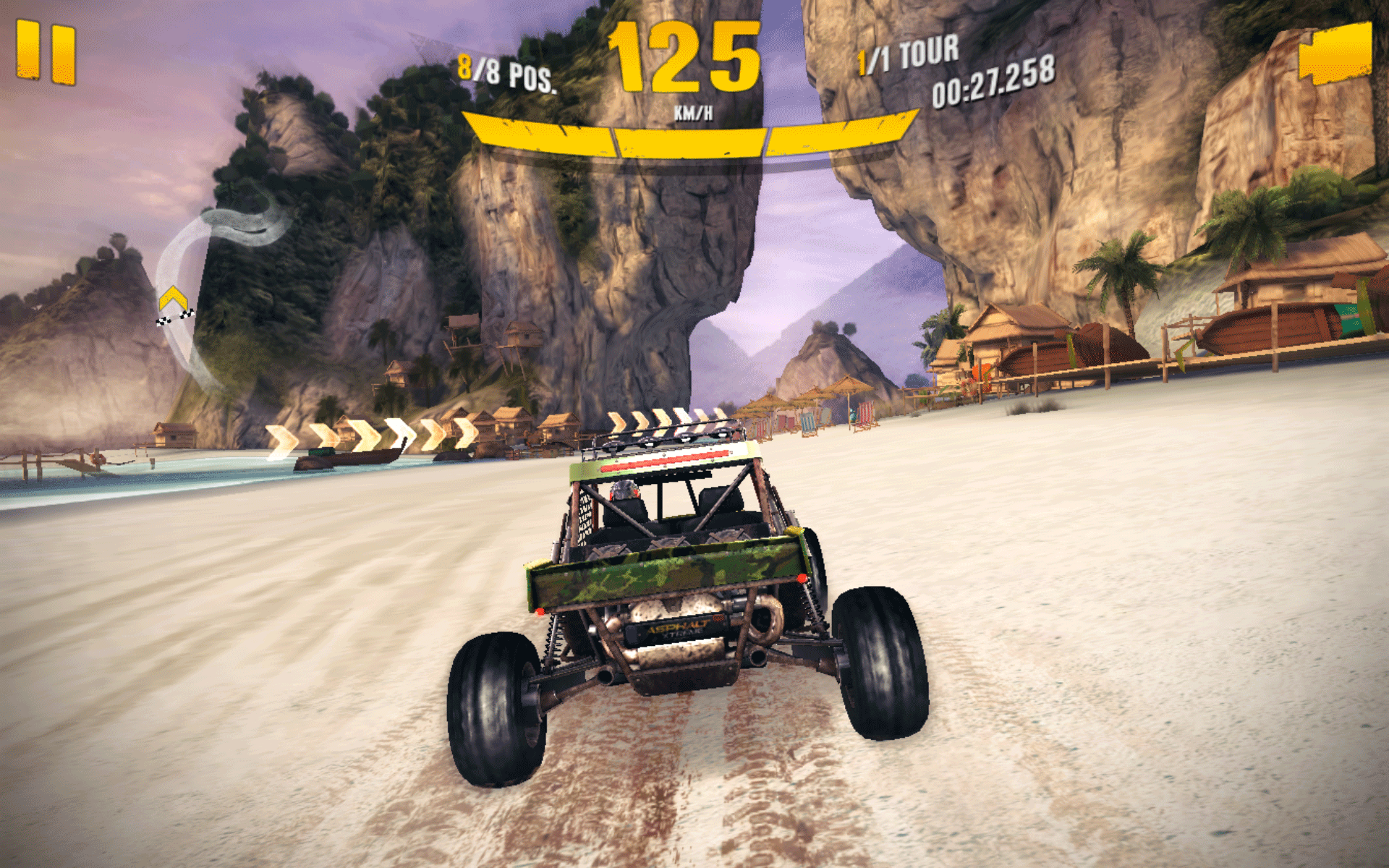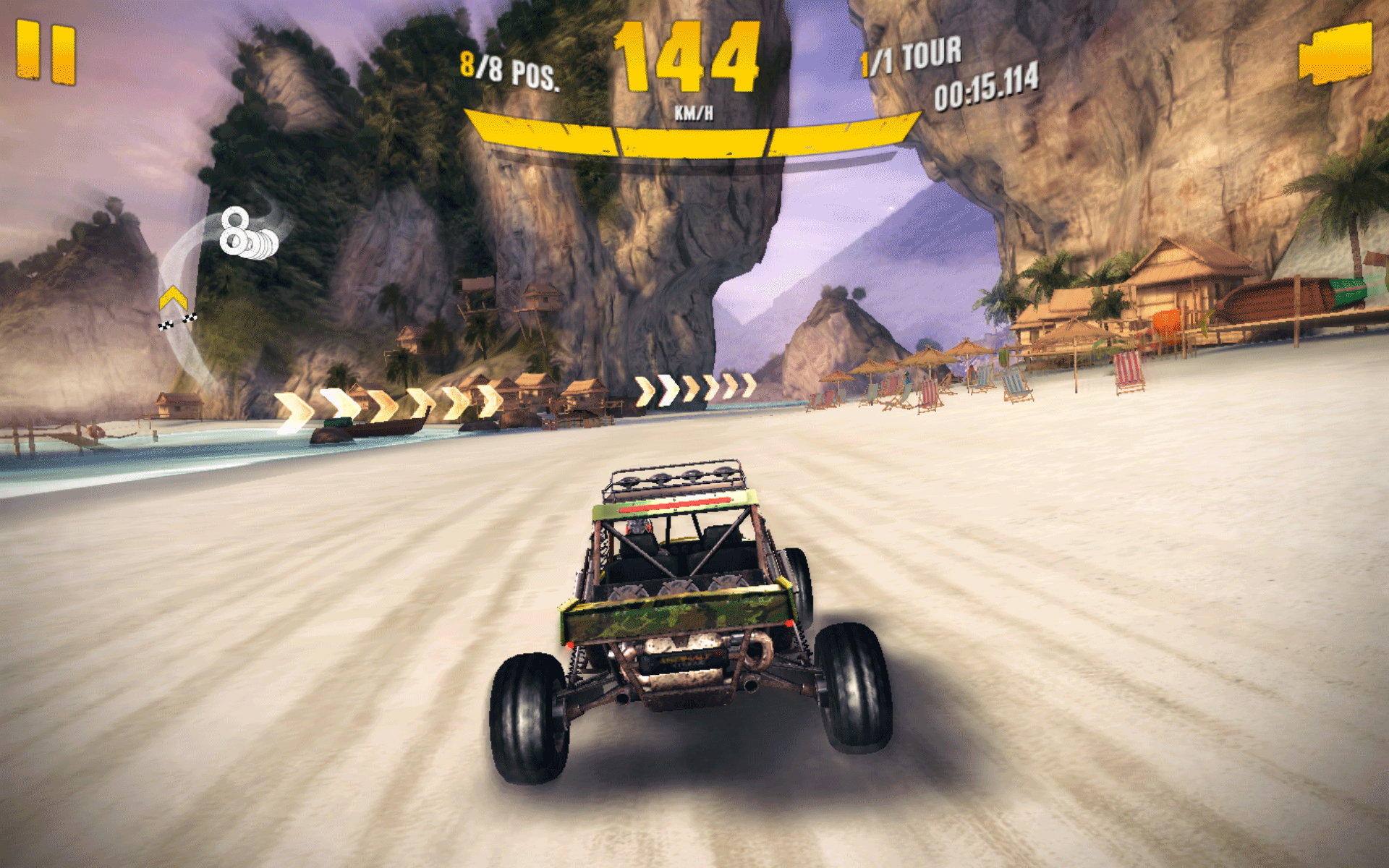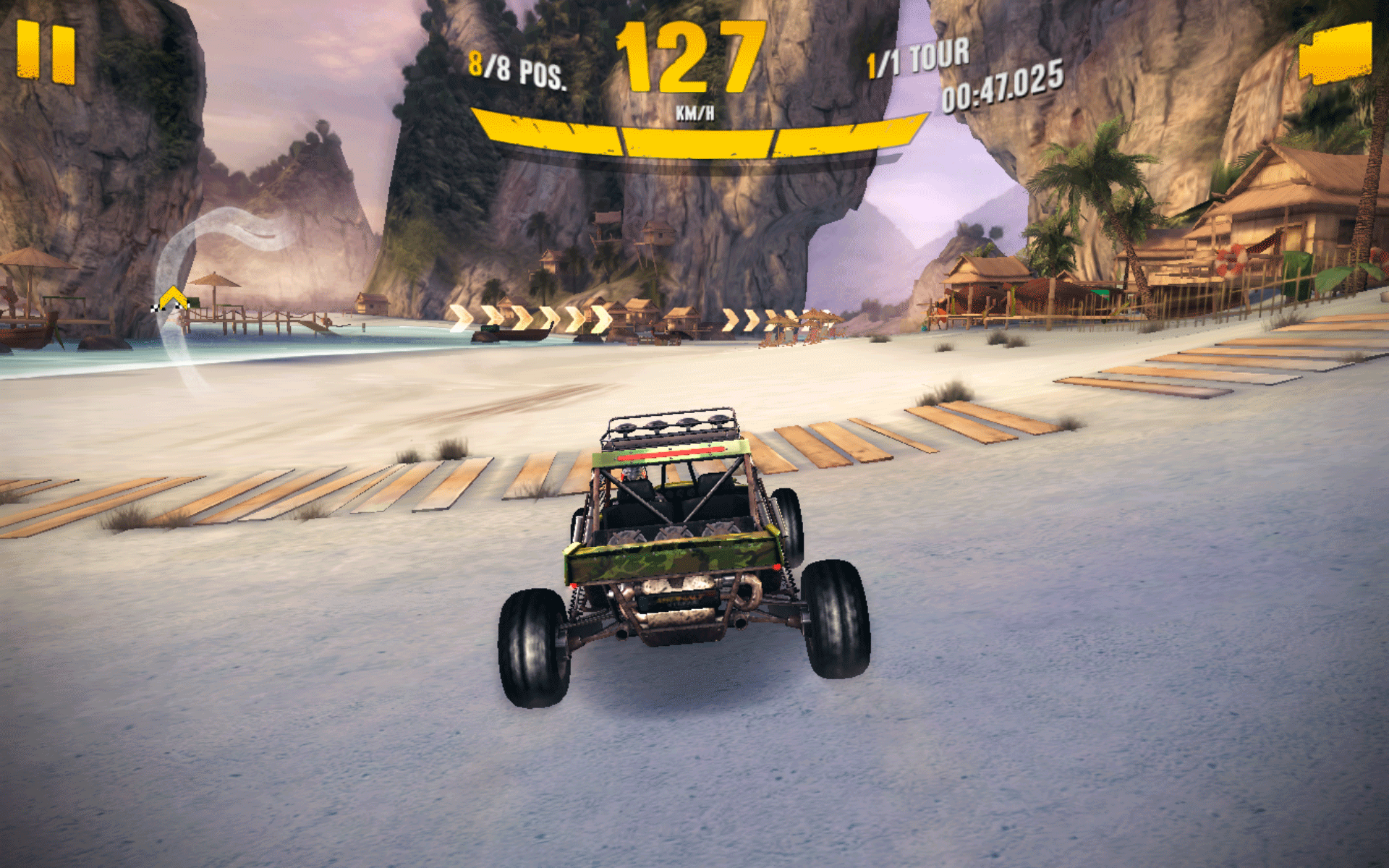Asphalt Xtreme
Asphalt Xtreme is a car racing game launched in end of October 2016 on Android, iOS and Windows Store. It is - for now - the last iteration of Gameloft’s Asphalt serie.
As I arrived at Madrid’s studio in the beginning of January 2015, the project has already been submitted to the team right before Christmas. So I had the chance to be part of the development of this game from the early design to its release.
Ambitions of this project
Asphalt Xtreme was supposed to be - at the beginning - just a “reskin” of Asphalt 8, one the recent most successful mobile game from Gameloft.
However, the original small team on the project (we were 3 Game Designers at that time… including 2 Level Designers) quickly felt he direction the project was taking was quite incompatible with a simple new iteration of Asphalt 8’s gameplay.
Barcelona’s studio (the one who made Asphalt 8 and was monitoring Asphalt Xtreme) want to take the opportunity to modify the game engine, make the game physics more realistic (take into account terrains’ verticality, gravity influence, impact of certain portions of the tracks on vehicles’ performances).
On our side tho, after various experimentations to reconcile the very arcade gameplay of Asphalt 8 and the very “offroad” aspect of the project’s theme, we quickly admit that big changes needed to be done:
- Several categories / archetypes of vehicles need to offer different handling feelings. Where Asphalt 8 only propose sport cars faster and faster, we were going to have buggies, rally cars, pick ups, trucks, monster trucks!
- As the game was going to have his list of cars being split in several archetypes, the linear progression of Asphalt 8 was shake up. We had to offer a player’s career in the game that matches the cars he owns, or aims for.
- The game can’t be - as the all Asphalt series - races on roads. Dirty environments, offroad tracks, where several vehicles of various sizes are competing. The game needed to be over-the-top, offering Extreme challenges!

Barcelona welcomed our propositions. The game had to be ambitious indeed!
Once I gathered the first iterations of Game Design documentation about the game direction, I specialised in the vehicles gameplay (handling, speed, cameras).
Controls and vehicles differentiation
In the end, the game offer 7 categories of vehicles: Buggy, Rally Car, Muscle Car, SUV, Pick Up, Truck, Monster Truck.
The main challenge was to offer handling sensations that were different for each category. For example, it is obvious that a truck can’t drift as easily as a buggy, the heavy weight of the vehicle as to be felt in his behavior.
Here are several ways used to differentiate them:
- Ease to steer/drift: In Asphalt 8, the drift mechanic is triggered when the player turns and press the brake button. It seems very artificial, and is identical between vehicles.
In Asphalt Xtreme, we changed this system so the transition between turning and drifting is more fluid, analogic: If the player steer enough time, the car enters drifting. This way, by making a car taking more time than others to enter drifting, we simulate its weight is more important.
- Use of Nitro: Each archetype has different advantages/disadvantages when using it’s nitro boost (how the car recharge it’s nitro bar, boost duration, power of the boost, etc.).
- Vehicles “stamina”: We implemented a all new système of strength/weakness for each archetype on the others. A Monster Truck can easily take down all the other types of vehicles. On the contrary, a buggy can only take down other buggies. This way, we play again on this feeling of lightness / heaviness between archetypes.
- Areas impact: In Asphalt Xtreme, the race track is rarely tarmac. Vehicles will drive in sand, mud, water, grass, ice, snow… Those areas have an impact on the handling and the speed of the car.
We took advantage of those gameplay variations to give strength to the heavy categories (trucks and monster trucks). They might be slower, but they can drive on any surface without losing speed or control.
- Obstacles blocking some paths: As heavy vehicles have advantages on certain areas, they also are the only ones able to destroy big obstacles, allowing them to take shortcuts.
Cameras
Getting satisfying racing cameras might have been my hardest task on the project.
I first started analysing gameplay cameras from various recent racing games (Motorstorm, Forza Horizon, The Crew, Asphalt 8, Nail'd, etc.).
By discussing with vehicle artists, and realising the time it was going to take to have final 3D models in game, I had to employ my highly praised 3DS Max skills to quickly create basic car shapes of the future cars. This way I was able to have an idea of the final space taken by the car on screen:
The mistake I made was to try create specific cameras for each archetypes. I was trying to help categories differentiation by the cameras that was associated to them. But I quickly ended with an infinite list of specific cameras, that was going to make me create a set of cameras for each vehicles in the game.
Here are some examples of the various early experimentations:
Also, I had to consider the size (and shape) of the screen from mobile devices: a low camera letting the vehicle lean on the side to emphasis the drifting moments worked perfectly on wide screens like iPhone 5 or 6… but was cutting vehicles in half on iPad screens.
After numerous iterations, I finally conceived 5 cameras more or less similar for all the vehicles in the game: Close (closer to the back of the vehicle, giving less visibility but more speed sensation), Visibility (the more away from the vehicle, letting the player more easily see what’s in front), Action (compromise between the 2 first cameras), Fixed (close to Action cameras distance, but stay focused on car’s back) and Immersive (1st person POV).
Other tasks
I also had the opportunity during those 2 years to work on:
- Several Game Design documents at the early stage of the project (vehicles differentiation, game modes, career mode structure)
- Pre-race cinematics creation on all races
- End race shots
- The all game tutorial design and implementation
- The various camera shots in garage (exterior and interior)
- Dealing with the sound team in Montreal about all the car’s engine sounds, and implement them
- Integration of the texts and their translation in the game
In the end, Asphalt Xtreme has been the first game I was able to follow and work on from its beginning to it’s release. It has been a very enriching experience, allowing me to work on a lot of different tasks with very interesting and talented people. I’m very proud of this game we finally released on last October.
